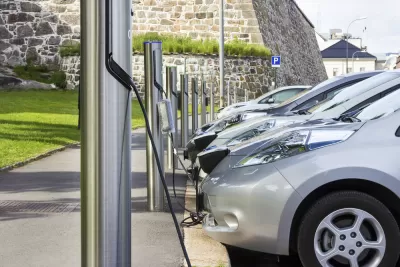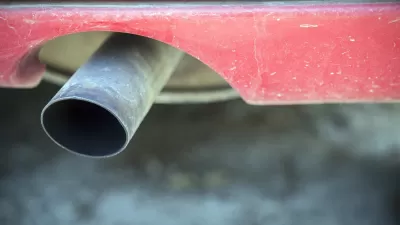The biggest obstacle to the adoption of electric vehicles in California, a shortage of charging infrastructure, just became a lot more manageable thanks to $200 million from Volkswagen stemming the from the dieselgate settlement.

The California Air Resources Board (CARB), the state's clean air agency that also implements most of the the state's laws and regulations designed to reduce greenhouse gas emissions, approved the first installment of the $800 million settlement with Volkswagen Group of America on July 27. The massive award stems from the illegal and intentional use of software in VW's diesel vehicles that enabled them to cheat on emissions tests, but when driven on the road, the same vehicles would "spew up to 40 times the allowed amount of nitrogen oxide (NOx) into the atmosphere," often referred to as 'dieselgate.'
"The $800 million ZEV [zero emission vehicle] investment commitment is part of an agreement by the company with CARB, U.S. EPA, the California Department of Justice and the U.S. Department of Justice that combines mitigation and penalties to fully resolve all of the environmental harm from VW’s actions," notes CARB's July 27 press release.
"The funds will be invested by Electrify America, a subsidiary of VW created for that purpose, in four installments of $200 million each over the next 10 years in projects identified in four separate 30-month Investment Plans approved by CARB through a public process."
The $800 million to be used "over the next 10 years on zero emission vehicle (ZEV) infrastructure, education, and access activities to support increased adoption of ZEV technology in California," according to the March 8, 2017 California ZEV Investment Plan: Cycle 1 [pdf].
"The vote came only after Electrify America modified its spending plan to increase the number of charging stations in disadvantaged communities," reports Chris Megerian, who writes about climate change and California for the Los Angeles Times' Sacramento office.
Volkswagen's investment could become an important part of the state's efforts to increase the number of zero-emission vehicles on the road. It's estimated that the company's spending will provide up to 8% of the necessary charging infrastructure in coming years.
A University of California study released last month identified the lack of access to electric vehicle (EV) chargers as the main obstacle to meeting California's goal of getting more than 4 million zero-emission vehicles on the road in California by 2030.
Related: "California should approve VW 'Electrify America' plan for electric-car charging: CARB analysis," by John Voelcker for Green Car Reports.
Hat tip to David McCoard.
FULL STORY: Volkswagen gets green light for charging stations under settlement plan

Alabama: Trump Terminates Settlements for Black Communities Harmed By Raw Sewage
Trump deemed the landmark civil rights agreement “illegal DEI and environmental justice policy.”

Planetizen Federal Action Tracker
A weekly monitor of how Trump’s orders and actions are impacting planners and planning in America.

The 120 Year Old Tiny Home Villages That Sheltered San Francisco’s Earthquake Refugees
More than a century ago, San Francisco mobilized to house thousands of residents displaced by the 1906 earthquake. Could their strategy offer a model for the present?

In Both Crashes and Crime, Public Transportation is Far Safer than Driving
Contrary to popular assumptions, public transportation has far lower crash and crime rates than automobile travel. For safer communities, improve and encourage transit travel.

Report: Zoning Reforms Should Complement Nashville’s Ambitious Transit Plan
Without reform, restrictive zoning codes will limit the impact of the city’s planned transit expansion and could exclude some of the residents who depend on transit the most.

Judge Orders Release of Frozen IRA, IIJA Funding
The decision is a victory for environmental groups who charged that freezing funds for critical infrastructure and disaster response programs caused “real and irreparable harm” to communities.
Urban Design for Planners 1: Software Tools
This six-course series explores essential urban design concepts using open source software and equips planners with the tools they need to participate fully in the urban design process.
Planning for Universal Design
Learn the tools for implementing Universal Design in planning regulations.
Clanton & Associates, Inc.
Jessamine County Fiscal Court
Institute for Housing and Urban Development Studies (IHS)
City of Grandview
Harvard GSD Executive Education
Toledo-Lucas County Plan Commissions
Salt Lake City
NYU Wagner Graduate School of Public Service





























